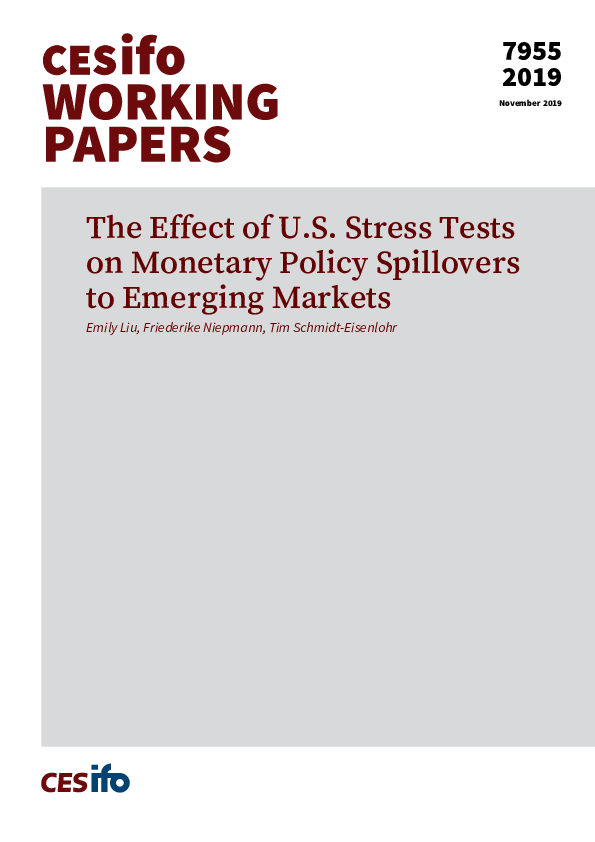The Effect of U.S. Stress Tests on Monetary Policy Spillovers to Emerging Markets
CESifo, Munich, 2019
CESifo Working Paper No. 7955

This paper shows that monetary policy and prudential policies interact. U.S. banks issue more commercial and industrial loans to emerging market borrowers when U.S. monetary policy eases. The effect is less pronounced for banks that are more constrained through the U.S. bank stress tests, reflected in a lower minimum capital ratio in the severely adverse scenario. This suggests that monetary policy spillovers depend on banks’ capital constraints. In particular, during a period of quantitative easing when liquidity is abundant, banks are more flexible, and the scope for adjusting lending is larger when they have a bigger capital buffer. We conjecture that bank lending to emerging markets during the zero-lower bound period would have been even higher had the United States not introduced stress tests for their banks.
Monetary Policy and International Finance